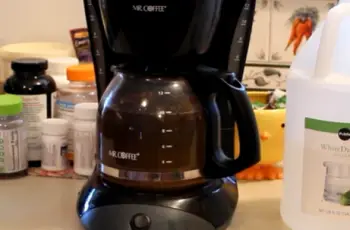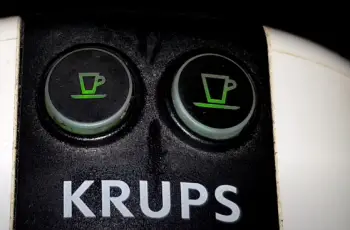For many, the day doesn’t truly begin until they’ve had their first sip of coffee. It acts as the necessary fuel to jumpstart your morning. However, when faced with a sluggish coffee maker, especially amidst a packed schedule, it can be incredibly frustrating. We’ve noticed that a common issue among our readers is, “Why is my coffee maker operating so slowly?”
If you’re going through the same phase, this article is for you! Here, we’ve chronicled some of the main reasons behind a slow coffee maker. And guess what? We’ve brought to you some of the coolest solutions to this bizarre issue! Give this article a minute if you’ve got no intention to suffer anymore.
Getting your morning coffee should be a quick and enjoyable experience. You just have to turn on your Keurig machine, pour water in it, pop in your K-cup, and wait till you get your favorite cup of coffee.
But, when your Keurig is dripping slowly, it could quickly ruin your morning, kill your vibe or annoy you as you wait for the warm and inviting cup of coffee to brew. Here are some of the reasons why your Keurig might be too slow and what you can do about it.
Why Is My Coffee Maker So Slow
If your coffee maker is functional and brews your coffee normally other than being so slow then you must not worry at all since the coffee brewing machine is fine and okay. The most likely reason for coffee machines brewing slowly is common for every user. The unwanted mineral deposits within the machine are the culprit that slows down the brewing process.
People using tap water for brewing coffee often contain limestone and calcium that is insoluble and deposits in the internal parts of the machine. This infusion of minerals inside might damage the machine in the long run if left uncleaned. Additionally, abnormal water flow is also a sign of the machine’s tube being jammed disturbing its coherent flow.
Blocked Water Line
The primary reason your Keurig is obnoxiously dripping at a snail’s pace is that of the blocked water line. When the small, concentrated needle line or channel where your coffee passes through gets blocked your Keurig will not work properly. So, you have to unplug the water lines inside the machine. While your brewer is making your coffee, it’s just not reaching your cup as soon as you expect it to. Check our list of top Keurig models to try and avoid this problem altogether.
Puncture Needle
You have to replace the puncture needle. While you can simply fix the clog on your coffee machine with a sewing needle or a toothpick, in severe cases you may have to buy a new needle. Still, it is cheaper than buying a new Keurig.
Internal Water Line Issue
When you tried to unclog the water line or replaced the needle but they didn’t solve the problem, there’s a high probability that a more serious issue exists inside your coffee maker. If so, you may have to disassemble your machine. First, you have to restart the machine. Simply resetting it could do the trick. Perhaps you have kept it plugged in all the time.
Turn the power off. It’s better to be safe when trying to perform a diagnosis on your brewer. After a few minutes, flip it back on again. Next, take the reservoir off to get to the important pieces. Open up the top as if you’re just inserting a K-Cup. Doing so would allow you to access the needle and K-cup. Dig into the open lid on the upper portion of the K-cup reservoir to get the needle. This is the part where boiling water shoots through your K-cup.
Use a paperclip or another needle to do so. Remember that it punctures the K-cups so it can make your delicious coffee, so don’t use your fingers. This process will clear out the blockages and restore the water flow. Take the needle out and clear it using objects like needle and toothpick.
The tubes behind the puncture needle are clogged. If the needle is clear and there are no coffee grounds or lint hiding inside, look into the tubes behind it. Just use a paper clip or toothpick to clear out the blockage inside. It is also advisable to wash the inside of the tubes, to clear out whatever was blocking them. Finally, put your Keurig back together. Just do everything you did backward to put it back together. Turn the machine back on, and try again. If the normal flow hasn’t returned, you may have to give call the customer service or officially say goodbye to your machine. But, if this process worked—then you can enjoy your cup of coffee, as the water flows normally, and the flow speed goes back to normal.
Final Thoughts
In this article, we’ve answered all the questions that you had about your slow coffee machine. If you’ve been through this article, you’ll no longer be ranting, “Why is my coffee maker so slow?” We’ve discussed some of the hacks that’ll aid you to deal with your slow coffee machine. You won’t need any extra equipment if you follow our instructions. We’ve been through several brainstorming hours to provide you with some valuable suggestions. Let us know if it comes in handy!
So, after a detailed discussion above, you may still be asking the same question you had earlier: Why is my coffee maker so slow?” More often than not, the slow coffee maker issue is fixed after cleaning the device because, like any other equipment, coffee makers can get so used up and may not function at its best due to clogs. Now, if the steps we outlined above did not make any progress in the coffee-making process, then perhaps you should consider having it checked by a professional as there can be other factors that may cause your machine to function at a slower rate.
For one, it can also mean that the thermostat, the pump valve, the heater, the timer, or any other parts of the machine is of low quality, stuck, or even broken. The professional might then suggest that you change or even upgrade such an item. Nevertheless, it pays to not give up on your tools yet at the first sign of complications. Most importantly, it is best to clean and maintain your equipment religiously to prevent other issues.


